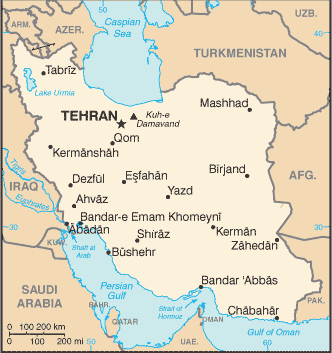Iranian Foreign Ministry officials have confirmed weekend speculation that they have resumed the conversion of uranium into reactor fuel, a move which will keep their stockpile from growing in the near term.
 Most of Iran’s enrichment is to 3.5 percent, meant for its power plant in Bushehr, while a smaller amount is produced to the 20 percent level. This 20 percent uranium, still far short of the 90-plus percent needed for weapons, has Western officials condemning Iran, but it is the level needed for fuel for the Tehran Research Reactor (TRR).
Most of Iran’s enrichment is to 3.5 percent, meant for its power plant in Bushehr, while a smaller amount is produced to the 20 percent level. This 20 percent uranium, still far short of the 90-plus percent needed for weapons, has Western officials condemning Iran, but it is the level needed for fuel for the Tehran Research Reactor (TRR).
The TRR was built by the United States in the late 1960s, and the aging reactor produces materially all of the medical isotopes in Iran. Iran has struggled to acquire fuel from abroad for the reactor, and has instead made several attempts of varying success to replicate the fuel rods.
Once the uranium is converted into the rods it is effectively useless for further enrichment, and out of the “stockpile” equation. Iran’s continued use of its civilian enriched uranium for civilian purposes has kept the stockpile from growing to the levels predicted by Israel, though officials have hinted they believe this use in and of itself is some sort of trick.
With the “stockpile” issue once again revealed as illusory, the Foreign Ministry also urged Western nations to approach the upcoming talks scheduled for later this month to negotiate a settlement on Iran’s civilian program.


